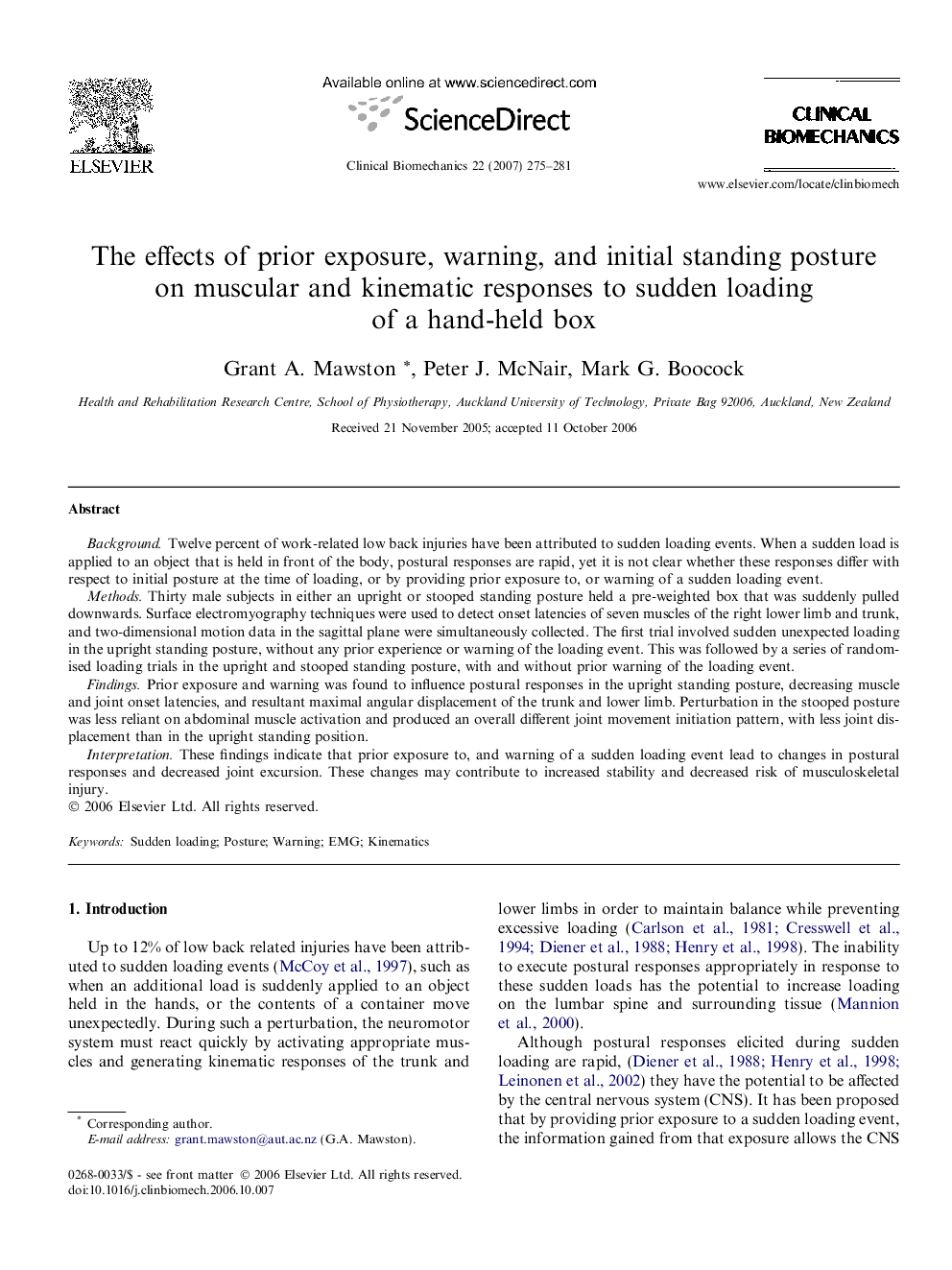| Article ID | Journal | Published Year | Pages | File Type |
|---|---|---|---|---|
| 4051700 | Clinical Biomechanics | 2007 | 7 Pages |
BackgroundTwelve percent of work-related low back injuries have been attributed to sudden loading events. When a sudden load is applied to an object that is held in front of the body, postural responses are rapid, yet it is not clear whether these responses differ with respect to initial posture at the time of loading, or by providing prior exposure to, or warning of a sudden loading event.MethodsThirty male subjects in either an upright or stooped standing posture held a pre-weighted box that was suddenly pulled downwards. Surface electromyography techniques were used to detect onset latencies of seven muscles of the right lower limb and trunk, and two-dimensional motion data in the sagittal plane were simultaneously collected. The first trial involved sudden unexpected loading in the upright standing posture, without any prior experience or warning of the loading event. This was followed by a series of randomised loading trials in the upright and stooped standing posture, with and without prior warning of the loading event.FindingsPrior exposure and warning was found to influence postural responses in the upright standing posture, decreasing muscle and joint onset latencies, and resultant maximal angular displacement of the trunk and lower limb. Perturbation in the stooped posture was less reliant on abdominal muscle activation and produced an overall different joint movement initiation pattern, with less joint displacement than in the upright standing position.InterpretationThese findings indicate that prior exposure to, and warning of a sudden loading event lead to changes in postural responses and decreased joint excursion. These changes may contribute to increased stability and decreased risk of musculoskeletal injury.
